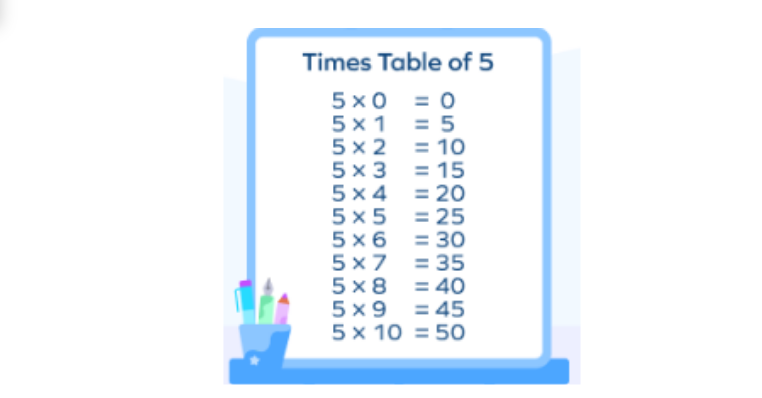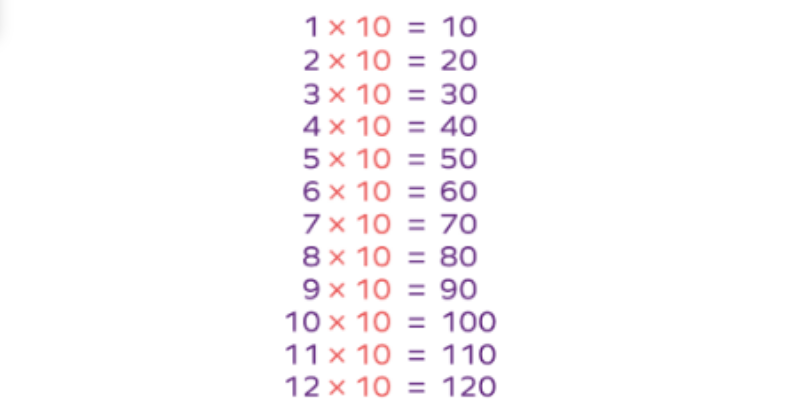




INTRODUCTION TO WORKSHOPS PROVIDED
Mr NK offers a variety of teaching sessions that have been specially designed to accommodate all needs and requirements. Sessions range from large groups to small groups and are even available as 1 to 1. Whether your learning style is online or face to face, we can accommodate your needs. Sessions have also been created to assist all budgeting needs. So whether you want to book six weeks or 12 weeks, the choice is yours and guess what?, you can even pay as you go. It may even be the case that your child needs a crash course for quick immediate results, we have that to. MR NK has even thought about those who are unsure if the Tunes Times Tables programme is right for them by introducing taster sessions.
Please be aware prices are subject to change and will incur an additional fee (depending upon mileage) for those not based within a 2 mile radius.
Times Tables
Multiples of a number are listed in a times table. In every step, one can add the same number to get the times table of any number. We would begin with two and then add 2 in each step to work out the times tables for 2. Multiplication facts are the answers obtained in each step that are multiples of two.
Examples of Times Tables
In addition to 2, children can benefit from times tables of 5s and 10s. As well as helping kids memorise these times tables, they can also be used for other times tables.

We calculate as follows in the image above:
1 lot of 5 = 5
2 lots same of 5 = 5 + 5 = 10
3 lots of 5 = 5 + 5 + 5 = 15
4 lots of 5 = 5 + 5 + 5 + 5 = 20, and so on…
Times Table of 10
In addition, every lot of 10 has to be multiplied by 10.
1 lot of 10 = 10
2 lots of 10 = 10 + 10 = 20
3 lots of 10 = 20 + 10 = 30
4 lots of 10 = 30 + 10 = 40, and so on…
Take a look at the chart.

Why are Times Tables useful?
A multiplication table can be useful in several ways. Below are a few of them:
- Multiplication problems involving multiplication can be solved faster by a student who knows his or her times tables well.
- With a good understanding of times tables, students can understand maths concepts more quickly.
- It is not just about multiplication that times tables can help students with, but also about addition.
- Additionally, it gives students a greater sense of confidence.
- The children’s memory is also improved by memorising times tables.
- Performing quick calculations in classroom maths problems also requires a knowledge of multiplication tables.
Time tables: why should we learn them?
See how long it takes to count up to 20 with your children. You might use one if your child enjoys things like stopwatches or watches with seconds’ hands. Next, ask them to multiply two by ten. Your students will immediately realise why learning tables is crucial once they receive the answer you provide. Time is saved. Our first mathematical aid, our fingers, likely played a significant role in how we organised our counting in early maths. We can deal with much larger numbers with the help of arithmetic if we learn the most efficient methods of calculating rather than moving backwards and forwards, one number at a time.
Tables are not only useful for multiplication but also for division over the long term. The biggest bite is taken first when dividing a number, which starts the division process. If you want to divide 36 by 5, for instance, divide it by 5. We can remove 7 x 5 from the equation with our tables, leaving 1 as the remainder. Cutting the number into smaller pieces without knowing the tables is much more complicated and time-consuming, dividing school a weakness.
Times Tables Learning Tools
Here are some items your child might find helpful at home to help with times tables:
- A stack of coins: If you have at least a dozen each of 1p, 5p, and 10p, along with at least two dozen 2p, you can make 12×12 tables, which will be useful when your child needs to check his work by counting. As long as you collect up the change, there is no charge.
- A pack of cards: When you deal your child two cards and ask them to multiply them, you can practise all the tables by removing aces and kings, counting Jack as 11 and Queen as 12.
- Pack of Blank Cards: Blank cards are infinitely versatile. You can use paper or cardboard or buy premade ones. Make Pelmanism sets with questions and answers based on your child’s struggles. Start with a small number of cards and build up to a large number. Write a question and an answer on each card, then deal the cards face down. What is your child’s score on all the questions? The majority of girls, as well as boys, enjoy this.
Numicon: Between one and ten units of colourful tiles make up the baseboard. Using a series of tiles, you can build tables in early maths. Despite being costly, I’ve sometimes found it very helpful for illustrating ideas, and since the tiles are consistent, children think in terms of numbers rather than just counting.
How to Learn Times Tables Fast
“Is there a way to make learning times tables fun?” parents have asked since times tables began. Children must learn times tables before entering high school, so parents should try to teach them in a fun way. Online maths tutors are an option, but what if your child wants to engage in some offline learning as well? To help you quickly teach times tables, here are eight tips we found to be highly effective.
- Prepare a times table sheet and hang it.
- Before they can run, make sure they can walk.
- Make your kids smarter by teaching them some tricks
- Get your groove on with these fun songs
- Take part in a multiplication war
- Occasionally quiz them, but do not overdo it
- Provide them with rewards for their efforts
Online Maths Tuitions:
If you require online maths tuition, look no further. We are here to help you with an online tutor to help you learn maths and times tables skills. We have a complete system for times tables learning and maths home tuition services. You can trust our maths tuition teacher to sharpen your child’s maths skills.
Faqs
What is the ideal age at which a child should know his or her multiplication tables?
As a child approaches age 9, they are usually familiar with arrays and how to count by 2’s and 5’s before learning their multiplication tables. Students learn multiplication tables at different times, so some may be able to learn them sooner than others.
Multiplication facts should be taught in what order?
It’s easiest to memorise x1 or x0, so most people suggest beginning with them. Since we want to learn multiplication, I recommend starting with x2. It makes sense to start with x2 since kids are already familiar with doubling and grouping in pairs.
Can I get my child's maths tuition near me?
Yes, we have a dedicated team of maths teachers who teach the children times tables and maths skills. We provide private and group tuition and also have a service of MTC test preparation that your kid can enrol in.











